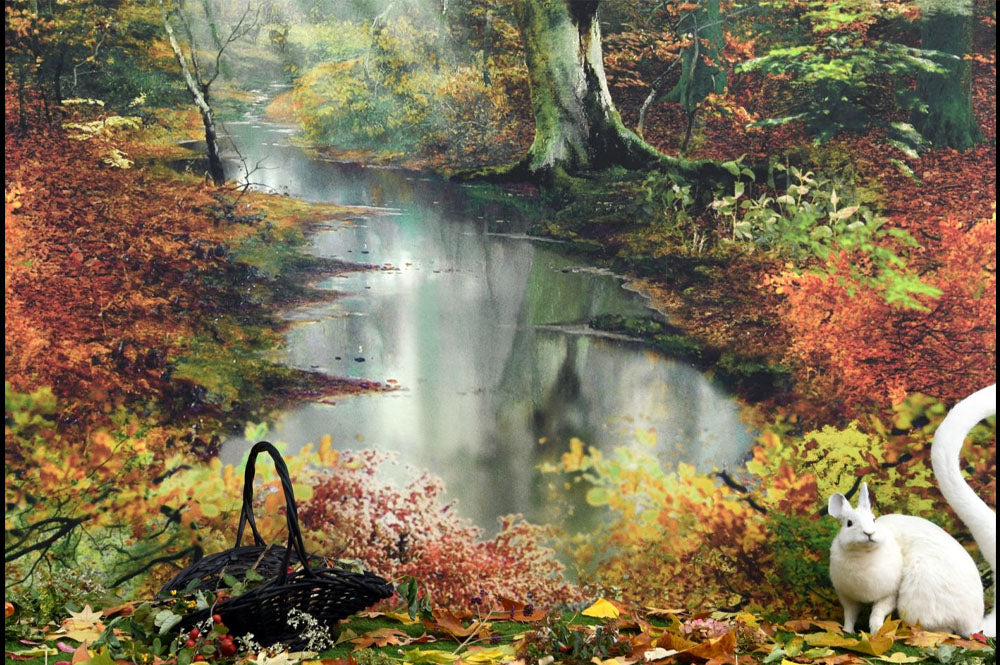The History of Wallpaper - Learn All About This Popular Design Element

The 1892 short story, “The Yellow Wallpaper,” by Charlotte Perkins Gilman showcases the more dramatic nature of this decorative product when the protagonist becomes mad after looking at the “repellant” and “smoldering unclean yellow” of the wallcovering that sprawls with “flamboyant patterns committing every artistic sin” throughout her room.
While that feminist treatise reflects more about the Victorian age and its treatment of women, wallpaper seeks more to uplift and augment human surroundings. The first wallpapers appeared in ancient China during the Qin Dynasty, maybe as early as 200 B.C. in the homes of royalty and the wealthy. Made of rice paper, the covering not only decorated the space, but it also prevented the mud walls from cracking during dry weather, according to architect and writer Beril Yilmaz.

Scalamandré Pop Rock fabric and wallpaper collection by Jean Paul Gaultier
Early wallpapers featured flowers, birds, mythical creatures, and landscapes. Images were either painted or printed on paper using an engraved rectangular piece of wood to create the design, said Luke Lee, managing editor of Ever Wallpaper. Later more durable materials such as linen and cotton replaced the rice paper, and creating wallpaper designs became easier.

The Caribbean Islands-inspired Scalamandré Pop Rock Grenada
Wallpaper arrives in Europe
The product didn’t appear in Europe until around the 13th century after the explorer Marco Polo began telling stories of a beautifully patterned paper that decorated Chinese interiors, according to David Mason, interior designer and the owner of The Knobs Company. Wallpaper soon became popular with the nobility and wealthy.
By the 16th century, new techniques changed wallpaper production. For example, a method was introduced around 1620 that imitated cut velvet and velvety wallpapers, known as flocks, became stylish, according to Joe Flanagan, founder of 90s Fashion World.
Innovation made wallpaper more accessible as well, said Mason. The middle class started using it around the 19th century when the product could be mass-produced on longer rolls, even with versions that featured complex designs. The material also appealed to many because it was less expensive that tapestries or fabrics.

Kravet's Lee Jofa green and white linen floral wallpaper
Experimentation changes wallpaper design
The first repeating designs appeared in 1675 when wood engraver Jean-Michel Papillon revolutionized wallpaper, allowing multiple identical images to be printed on continuous rolls of paper, said Flanagan. Another innovation occurred in1839 when Charles Harold Potter created a machine that could print in four colors. It also cut the designs in rolls instead of blocks, creating a quicker, more streamlined process.
By the 20th century, the public adored wallpapers — especially during the Victorian era when wallcovering became an essential element in décor. Designs by William Morris depicted elements of nature — trees, leaves, flowers and birds — and were quite popular. Unfortunately, these also contained arsenic and several children died as a result of the ingredient during the 1860s.
Today, of course, wallpaper is available in many patterns, styles, materials and colors. Some of the most popular traditional patterns include geometrics, florals, textures, botanicals and stripes. So don’t let anyone tell you that wallpaper is out of style … its' still a popular design option that has so many options, there is something for everyone.

Kravet Lee Jofa Summer Peony wallpaper
Did you like learning about the history of wallpaper? If so, you might want to read all about the development of dots.
Featured photo: Scalamandre Sous Bois Mural
Share
Get on the list
Sign up for our newsletter and we’ll keep you up to date on the latest news and exclusive offers!

Leave a Comment